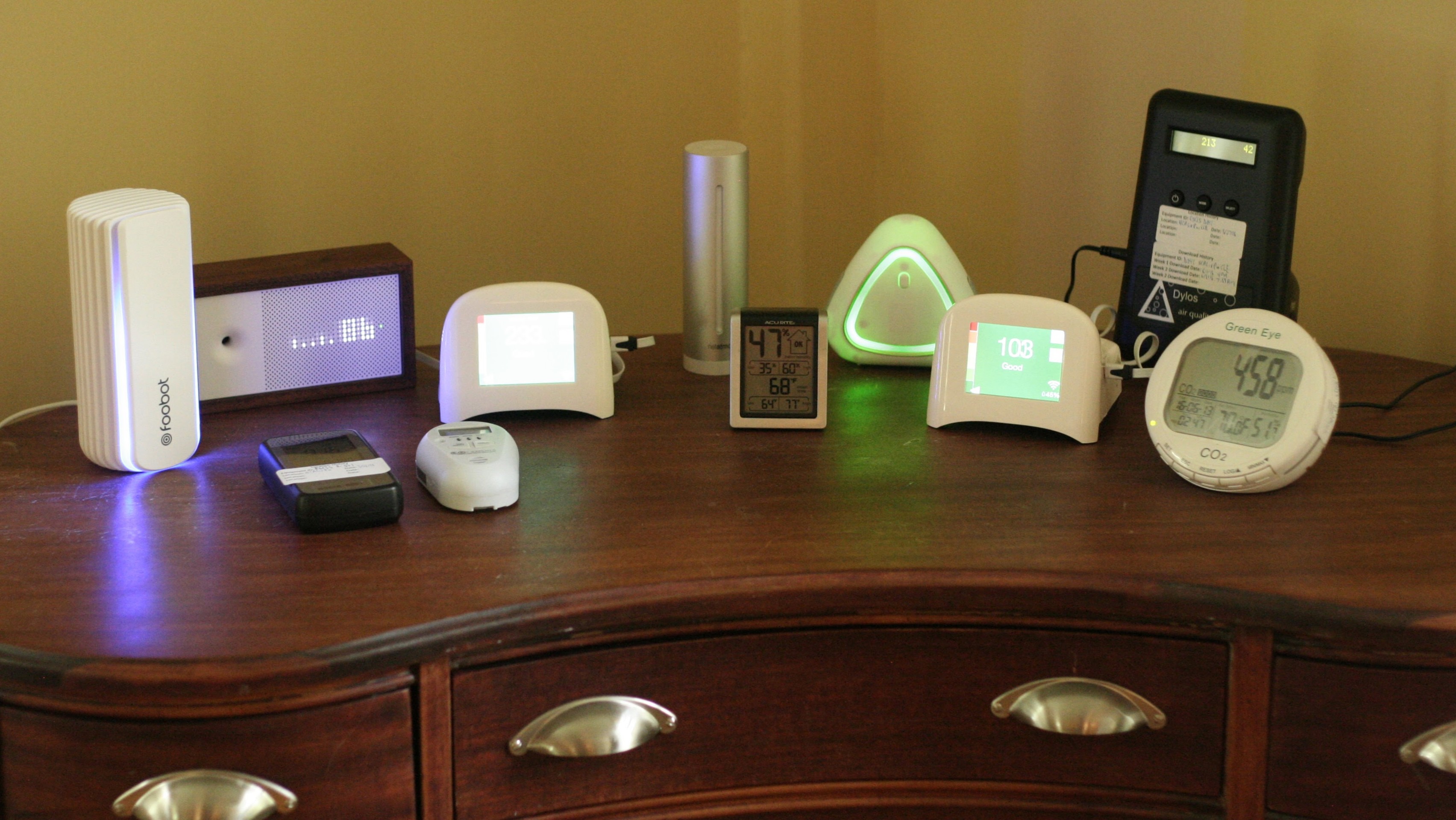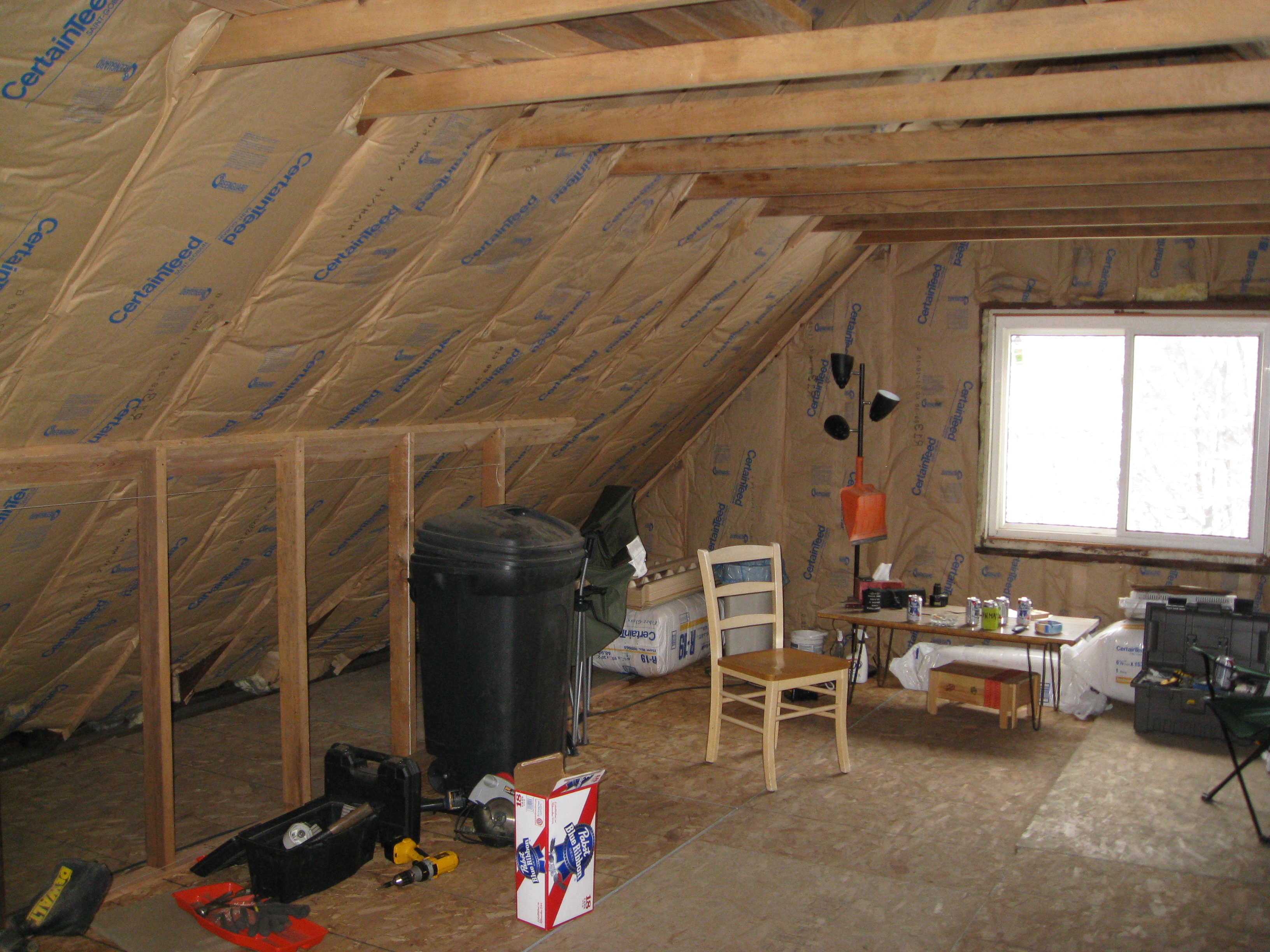How an Efficiency Program Killed My Business Pt 1

Note to Homeowners: This article is primarily aimed at the Home Performance industry. I strive for radical transparency, so I put this in the public sphere for you to read as well.
Energy efficiency rebate programs from gas and electric utilities have become pretty common nationwide. They give rebates for replacing your furnace or adding insulation to your home. While these programs seem like a good idea, they can actually be toxic to small businesses if not designed properly.
One such program from my gas utility, Dominion East Ohio, was a primary cause behind the death of my insulation contracting business. A business that in 2012 was 1 of only 97 businesses nationwide to do more than 100 projects with the Department of Energy’s Home Performance with Energy Star program. That made me a Century Club contractor. And now I’m out of business. Here is the story. In the next article, I’ll propose a solution.
First off, let me say the purpose of this is not to whine or to demonize the efficiency programs. I made plenty of mistakes, which I talked about in my articles Confessions of an Insulation Contractor Parts 1 & 2 and I’ll talk about in this article as well. I’ve gotten over my bitterness.
My purpose is to show the Home Performance industry the far reaching consequences of designing a program without a deep understanding of prescriptive thinking vs. comprehensive design when it comes to Energy Efficiency and comfort outcomes.1
First, some history
I started doing insulation contracting in 2009. As with any business owner getting started, it took me a while to figure out the value of what I was doing and what to charge. So my projects were often in the $1500 range for pretty much just blown insulation with very little air sealing, known as blow-n-go. (Air sealing is a tough service to sell because most homeowners don’t see the value of it. And frankly there is little if you aren’t measuring and finding air leakage with a blower door.)
I soon met an energy auditor, Karl Balla, who introduced me to the concept of Home Performance and whole house retrofits. I took a BPI Building Analyst class shortly thereafter, and upped my air sealing game from that day forward.
The Dominion East Ohio Gas program, which offered (and still offers) up to $1250 in rebates for energy efficiency upgrades, gave $40/hour towards air sealing. It also gave $.30/square foot for insulation anywhere – attic, walls, ducts, whatever. So now I could get the air sealing paid for by rebates and do a better job. I was thrilled, and my jobs jumped to $2500-3000 while still ending up in the $1500-2000 range as far as cost to the consumer. So it felt like a big win. I figured it bumped my 2011 sales from $300K to $400K just due to rebates.
BUT (there’s always a but), trouble lay ahead. My new ‘big’ jobs were in the $2500-$4000 range. This size job is still more of a “poke-n-hope for the best” project size than a truly systems based comprehensive project. We were able to do a little more work, but not a lot (because chasing incentives has a cost). Too often it wasn’t enough to do what I really needed to do to actually solve homeowner problems. Incentive design led to what really were small jobs, which led to myriad problems.
Chasing incentives leads to unsolved problems
Chasing incentives takes the homeowner’s and contractor’s eye off solving problems and puts it on getting as much rebate with as little out of pocket as possible. This program created “maximize incentive” thinking which takes the focus off designing solutions to problems and, ironically, artificially limits job size. Jobs are designed not to solve problems but to optimize obtaining free money. This in turn lead to lots of problems when the job was too small to actually solve the problem I was called to solve. For now, I’ll focus mostly on the business problems it caused for me.
I found that most homeowners were typically willing to spend between $1000 and $2500 for attic insulation.2 This budget range was often set by bid/no spec pricing, meaning they called a contractor who said ‘it’ll be somewhere between here and here’ but not actually spelling out exactly what the job was or taking the time to truly diagnose causes of the original customer complaint. With up to $1250 in rebates, that basically limited job sizes to $2500-$4000 with a traditional sales process.
Small jobs lead to lots of problems:
-Too much time running quotes
-Low referral rates
-Poor diagnosis quality
-Poor specification quality
-Mediocre results
-Market enforced low quality solutions
-Little margin for error
-Poor crew morale
-Low dollar margins (even if percentages appear high)
-Higher breakeven point
Too much time quoting
A $2500-4000 project will keep a crew of 3 busy for 1 day. So if you’re going to keep a crew busy with a 50% closing ratio, you have to run 2 quotes a day, or 10 quotes a week.
Running all of those quotes is A LOT of work. Getting a job took between 10 and 15 hours of work, which I did most of. Figure 30 minutes on the phone to chat and set up the quote, 1 hour of drive time each, plus 2 hours at the home, plus 1 hour to write it up (my quotes were also work scopes and detailed what the crew needed to do), plus 2-4 hours of emailing/calling back and forth with questions and scheduling, plus 1-2 hours of invoice and rebate paperwork, plus time to create the material list and order it.
Just thinking back on it makes me tired.
This does not factor the usual business admin stuff, writing my blog, doing marketing and so forth. I was working 60-80 hours/week most of the year. I was miserable. It burned me out.
Those small jobs could often be accomplished in 10-20 man hours, so that’s not even a full day’s work split between 3 crew members. It also meant that I had as many hours in landing a job as it took to accomplish. This simply is neither a sustainable model, nor one that encourages or rewards quality results.
Poor referral rates
Because I spent all my time running from one quote to the next I didn’t really have time to check up on jobs. So a client only saw me once. It was the contractor equivalent of a one night stand.
Early on, when I was intimately involved in every project, I ran referral rates in the range of 30-40% – one job very often led to another. When I was running after continual small jobs, my referral rate fell to less than 5%. Yuck. Not much of a way to build a business, even with spectacular Angie’s List reviews.
Prescription without proper diagnosis is malpractice – or – Stop selling and start designing.
Every house needs diagnosis. I now see it really takes more diagnosis than can be done in a 1-2 hour quote. We take a lot of time getting to know a house and understand occupant problems. But back then I had to rush diagnosis and do a lot of guessing or I wouldn’t make the necessary 10 quotes required to survive.
Design should not be part of sales cost. Do good solutions design and specifications, and charge for it. With our new process, clients are free to solicit their own bids or use contractors of our choosing, there is no coercion.
Before, it was a free quote and work scope without the client providing a specification. That’s free consulting, and it lead to my burnout. I simply couldn’t diagnose homes and write the specifications for free, it was too much. Quick or good, you choose. Now we charge for our diagnosis and specification time, and it is much more satisfying and has a far higher likelihood of success because we aren’t rushing and hoping to get the job.
How would you feel if your doctor rushed the diagnosis and prescribed the wrong thing or missed the real cause? That was the position I ended up in. The jobs were too small to do a good “free” diagnosis. That is the position contractors are put in when scope creep turns a free quote into a full physical and surgical plan.
Mediocre results
So my results, while typically ok, were not what they could have been or what I would like them to be. And when I got a call that I didn’t fix a problem, like in this article I wrote a few months ago, it really hurt me. It takes the wind out of your sails to hear things like that. How many clients never called me, either not wanting to or not realizing that more improvement was possible? Looking back there were a LOT of missed opportunities for much better outcomes.
Program design often unintentionally results in lower quality methods and materials
When rebates pay for labor intensive methods, you tend to specify labor intensive solutions. A great example is air sealing with single component gun foam. Two component, closed cell spray foam is a far better solution, but it’s fast to install and a much more expensive material. It is simpler to use it and creates an excellent, durable air seal. The $40/hr doesn’t do much for it. 3 inches of spray foam would have been lovely for knee walls, but I only got $.30/sf for insulation, so I used fiberglass or cellulose and then did additional air sealing on top of it. My creativity and options were limited by rebate structure. Looking back with what I know now, I would have adjusted how I did a lot of jobs if I wasn’t hamstrung by rebate structure.
With my previous methods, a $3000 job may have qualified for the full $1250 in rebates. Now a $10,000 job might only qualify for $500. Yet that $10K job will likely save a good bit more energy and lead to a far better result. There is a better way to structure this, which will come in the next series.
Little margin for error
None of us are perfect. It’s easy to forget a sash lock for sealing a hatch or an extra piece of line for venting a bathroom fan through a roof, other some other little thing. On bigger jobs, you just grab it before coming back the next day.
On smaller jobs a small detail overlooked becomes a crisis. Often the only vehicle on the job is the box truck with the blowing machine, so you have to disconnect the blow hose, hope that no one needs anything off the truck while you run out to a store you don’t know, hoping to find the part you need, while the crew hopefully continues working efficiently without supervision (it’s usually the crew lead that runs out).
That’s a pain. That hurts productivity. It hurts job flow. With a 2-3 day job it wouldn’t be a big deal but turn many 1 day jobs into 2 day jobs with a full schedule and you are done. Yes, you can carry more stuff on the truck, and that’s what we ended up doing, but you’re always going to miss something, somewhere. There is little margin for error.
Low crew morale
With small jobs there are a ton of little pressures that add up to low job satisfaction. Every day involves showing up, introducing yourself to a new homeowner, trying to figure out what the sales jerk (me, in this case) meant in his work scope, getting your head around the house and the job at hand, laying out drop cloths and setting up, doing the air sealing, venting bath fans out of the house, fixing attic ventilation if needed, keeping the client happy and chatting a bit with them, showing them what was being worked on, blowing the insulation in, cleaning up, picking up what was needed for the next day, ordering supplies from the supplier, and, oh yeah, having a life outside of work.
This killed my crew lead. It was too much.
But I was doing too much, so I put it on his shoulders. Meanwhile, the other crew members saw the lead chatting on the phone, chatting with the homeowner and so forth, and got jealous that he was getting the ‘easy’ work. That’s foreshadowing, by the way.
Since the jobs had to move so fast and I was constantly running quotes, there wasn’t a great deal of time for communication between myself and the crew outside of work. One of my biggest mistakes was not doing weekly meetings with the crew to touch base (because I was too busy trying to keep them busy). Problems festered that could have been easily handled if caught early.
On January 2nd 2013, they all got so ticked at each other they told me they refused to work with each other anymore. Talk about a crisis. I had 3 weeks of work booked at that time. I had been trying for months to replace a crew member that I knew was cancer, but I couldn’t find anyone. Not even one call back on job ads.
So I was stuck. The cancer had metastasized.
On the few larger jobs we ran my guys loved it. They left off one day and knew exactly where to pick up the next day. Everything was already set up when they got back. If they uncovered a problem we didn’t have supplies for today, no problem we’ll get it tomorrow.
Low dollar margins
I ran about a 20% net (yes, grosses were higher). So a $3000 job should have a $600 margin. (We’ll ignore the fact that I found larger jobs had substantially higher net margins, which helped offset lower margins of smaller jobs). $600 is not a lot of room to work with. If a $300 problem comes up I can’t just eat it. So I have to spend time selling it. I would tell the homeowner about it and bump the project cost a bit, likely a no profit upsell. Or worse yet, sometimes that detail would just get skipped and buried under a foot or two of insulation, never to be addressed or seen again unless a problem festered.
And what about callbacks? A callback can easily cost $200-600 between paying someone to go, the materials, time spent dealing with the complaint before/during/after, and lost productivity on another job. Warranty reserve? Not so much. One callback and the job is tanked.
With a bigger job, say $15,000, you would have room to work with. Room in time, room in materials, room to breathe. Those larger jobs lead to economies of scale from less set up, tear down, and figuring out what to do (crew mobilization).
Small jobs lead to a higher break even point
I found my breakeven point was about $30,000/month in sales. I could make a little under that, but when I got over $30K things got really good. Especially if there were some larger jobs in those bigger months.
Why are bigger jobs better? There is less time ordering and picking up supplies, fewer emergency midday drives going to the not so close supply house, less time figuring out the job and dividing up work for the day, less setup and teardown.
Oh, and due to a more involved client who was typically happier, and a ton of other factors I’m sure I haven’t noticed yet.
The jobs are more fun to sell (like selling pieces of art instead of junk). Now I spend more time with the customers, and much less with prospects. The only time I don’t get paid for is the 10 minutes we initially spend on the phone.
A happier crew, too. Small mistakes are small. And they often get more working hours on a big job, and they’re paid hourly.
Programs drive small jobs
So small jobs really suck. They carry a lot of little costs that really add up, and those mean that I had to do more of them to make a living. Outcomes are too small to be noticed. They have a high likelihood that everybody will be unhappy and a low likelihood that everybody will be happy – the exact opposite of big jobs. Yuck. Small jobs suck in the Home Performance world.
And every incentive program I have seen drives smaller jobs. So they are inadvertently killing other businesses like mine, I’ll give examples in part 2.
In part two I’ll talk about my move to subcontracting, and how that failed too. You can click on it below.
If this rings true to you or you’ve had a similar experience, share the heck out of this article and tell your story. Things are not going to change unless we push for it. So please help!
Image Credit: Tax Credit on Flickr, Creative Commons
1 Granted, most programs don’t have any accountability or incentive for positive outcomes and therefore don’t give a hoot if they occur. (And that’s another article, still.)
2 Attic insulation is just a simple thing in the minds of most, including mine a few years ago. Insulation is just part of a system needed to make a home perform well from comfort, health, durability, and efficiency perspectives. If you are solving a problem a homeowner has, and not just ‘adding insulation’, they are willing to spend much more. One client is spending $15,000 on attic solutions right now – a new bath fan, sound proofing, air sealing and insulation, and more. By fitting to what he wants and needs, he was willing to spend much more, and consequently is very likely to solve the problems he called me for.
Get the HVAC Guide

It's free! Make buying a new furnace, air conditioner, or heat pump less stressful.










